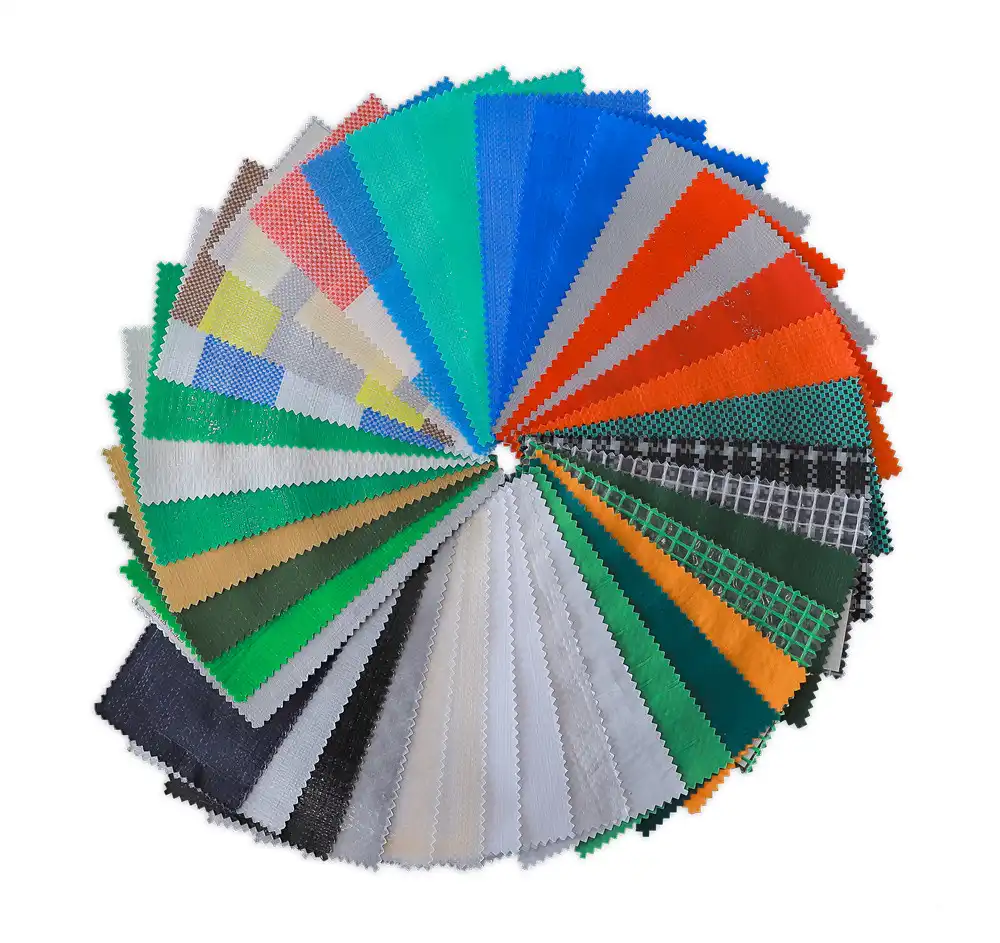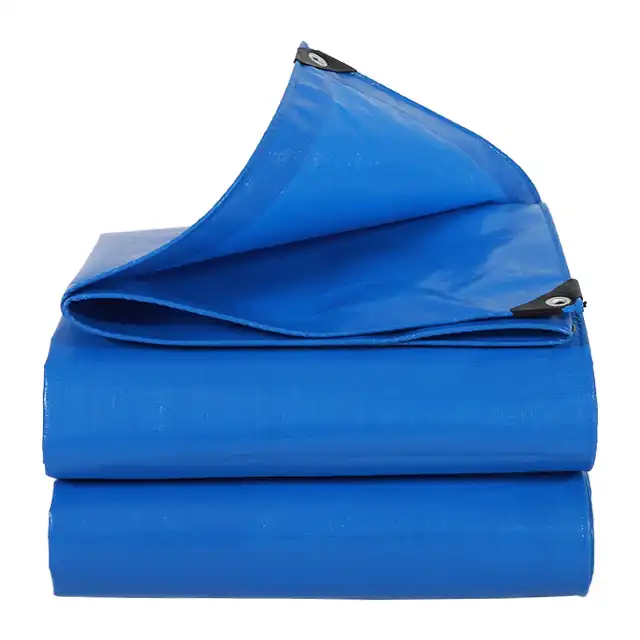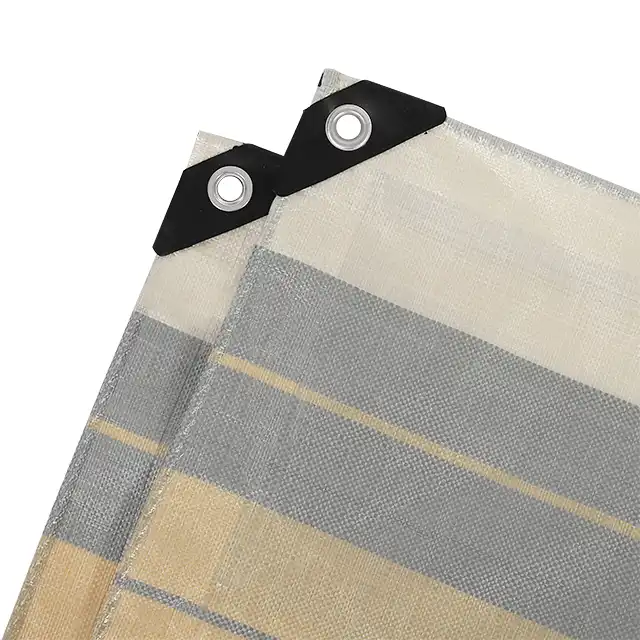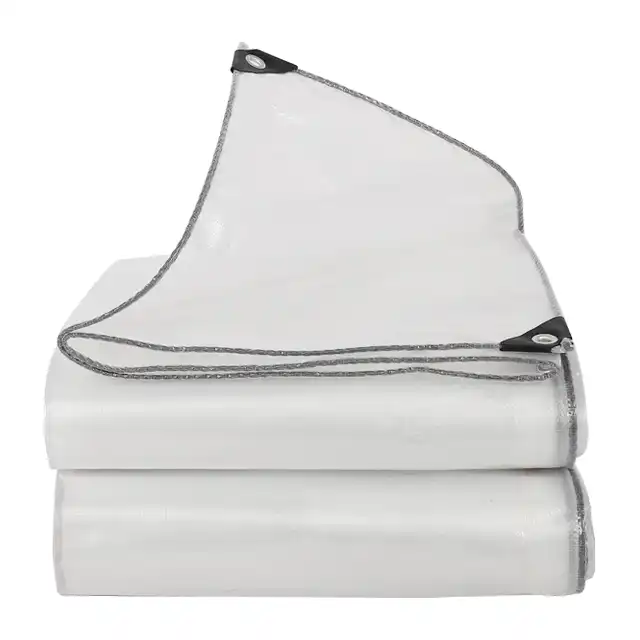Safety First: Fire Retardant Red Tarpaulin Sheets Explained
In today's safety-conscious world, fire retardant materials have become essential across numerous industries and applications. Fire retardant red tarpaulin sheets represent a critical advancement in protective covering technology, combining the durability and versatility of traditional polyethylene tarpaulins with enhanced fire resistance properties. These specialized covers provide an additional layer of safety in environments where fire hazards pose significant risks to personnel, equipment, and valuable assets. The distinctive red color not only serves aesthetic purposes but also functions as a visual safety indicator, making these tarps easily identifiable in emergency situations. Understanding the composition, applications, and benefits of red tarpaulin sheet products enables businesses and individuals to make informed decisions about their protective covering needs while prioritizing safety above all else.
Understanding Fire Retardant Technology in Red Tarpaulin Sheets
Chemical Composition and Fire Resistance Mechanisms
 Fire retardant red tarpaulin sheet technology incorporates sophisticated chemical treatments that significantly reduce the material's flammability and combustion rate. These specialized tarps are manufactured using high-density polyethylene (HDPE) woven fabric as the base material, which is then coated with low-density polyethylene (LDPE) containing fire retardant additives. The fire retardant compounds work through multiple mechanisms, including thermal decomposition that releases flame-inhibiting gases, formation of protective char layers that insulate the underlying material, and dilution of combustible gases in the flame zone. The red tarpaulin sheet undergoes rigorous testing to ensure compliance with international fire safety standards, with manufacturers carefully balancing fire resistance with other essential properties such as waterproofing, UV protection, and mechanical strength. Advanced formulations ensure that the fire retardant properties remain effective throughout the product's lifespan, even when exposed to harsh environmental conditions including extreme temperatures, moisture, and UV radiation.
Fire retardant red tarpaulin sheet technology incorporates sophisticated chemical treatments that significantly reduce the material's flammability and combustion rate. These specialized tarps are manufactured using high-density polyethylene (HDPE) woven fabric as the base material, which is then coated with low-density polyethylene (LDPE) containing fire retardant additives. The fire retardant compounds work through multiple mechanisms, including thermal decomposition that releases flame-inhibiting gases, formation of protective char layers that insulate the underlying material, and dilution of combustible gases in the flame zone. The red tarpaulin sheet undergoes rigorous testing to ensure compliance with international fire safety standards, with manufacturers carefully balancing fire resistance with other essential properties such as waterproofing, UV protection, and mechanical strength. Advanced formulations ensure that the fire retardant properties remain effective throughout the product's lifespan, even when exposed to harsh environmental conditions including extreme temperatures, moisture, and UV radiation.
Manufacturing Process and Quality Control Standards
The production of fire retardant red tarpaulin sheet involves a sophisticated manufacturing process that begins with the extrusion of high-strength polyethylene yarns using state-of-the-art equipment. These yarns, ranging from 400D to 2500D thickness, are woven into fabric using specialized water-jet looms capable of producing widths up to 5 meters without joints. The weaving process utilizes mesh counts between 10x10 and 14x14, ensuring optimal strength-to-weight ratios while maintaining flexibility. The fire retardant coating application represents the most critical phase, where professional technicians operate large fabric coating machines to apply precisely formulated LDPE compounds containing fire retardant additives. Quality control measures include continuous monitoring of coating thickness (7-12 mil), weight specifications (100gsm-180gsm), and fire resistance properties. Each red tarpaulin sheet undergoes comprehensive testing including flame spread tests, heat release rate measurements, and smoke density evaluations to ensure consistent performance and compliance with safety regulations.
Performance Characteristics and Testing Protocols
Fire retardant red tarpaulin sheet products demonstrate exceptional performance characteristics that extend beyond basic fire resistance. These materials maintain their structural integrity under extreme conditions, exhibiting tear resistance, puncture resistance, and dimensional stability even when exposed to high temperatures. The fire retardant treatment does not compromise the material's inherent waterproofing capabilities, ensuring 100% water resistance while providing enhanced safety features. UV treatment levels ranging from 1% to 7% protect the red tarpaulin sheet from solar degradation, maintaining both color stability and fire retardant properties over extended periods. Performance testing protocols include cone calorimeter tests to measure heat release rates, vertical flame tests to assess flame spread characteristics, and limiting oxygen index measurements to determine the minimum oxygen concentration required for sustained combustion. These comprehensive evaluations ensure that fire retardant red tarpaulin sheets meet or exceed industry standards for safety, durability, and performance across diverse applications.
Applications and Safety Benefits in Various Industries
Construction and Building Protection Applications
The construction industry represents one of the primary markets for fire retardant red tarpaulin sheet products, where safety regulations and fire prevention measures are increasingly stringent. These specialized covers provide essential protection for building materials, equipment, and work areas during construction activities where fire hazards may be present. The red color serves as an immediate visual indicator of fire-safe materials, helping safety officers and workers quickly identify compliant covering solutions. Construction sites utilize fire retardant red tarpaulin sheets for scaffolding enclosures, temporary roofing, equipment covers, and debris containment systems. The materials' ability to resist flame spread helps prevent small fires from escalating into major incidents, protecting valuable construction materials and reducing project delays. Additionally, these tarps maintain their protective properties in harsh weather conditions, providing reliable coverage that doesn't compromise safety standards. The combination of fire resistance with traditional tarpaulin benefits makes red tarpaulin sheet products indispensable for construction projects requiring enhanced safety protocols.
Industrial and Commercial Safety Solutions
Industrial facilities across various sectors have embraced fire retardant red tarpaulin sheet technology to enhance workplace safety and protect valuable assets. Manufacturing plants, chemical processing facilities, and storage warehouses utilize these specialized covers for equipment protection, temporary barriers, and emergency response preparations. The fire retardant properties provide crucial protection in environments where sparks, hot materials, or chemical reactions could potentially ignite conventional tarpaulins. Logistics and transportation companies employ red tarpaulin sheets as truck covers for hauling materials that require fire-resistant protection during transit. The high visibility red color enhances safety by making covered loads easily identifiable to emergency responders and regulatory inspectors. These applications benefit from the material's dual functionality, combining fire safety with practical features such as waterproofing, UV resistance, and tear strength. Regular industrial use demonstrates the durability of fire retardant red tarpaulin sheet products, with many installations maintaining their protective properties for years under demanding operational conditions.
Emergency Response and Disaster Preparedness
Emergency response organizations and disaster preparedness agencies have recognized the value of fire retardant red tarpaulin sheet products for critical safety applications. These materials serve essential roles in evacuation shelters, emergency supply storage, and disaster relief operations where fire safety is paramount. The distinctive red color aids in rapid identification and deployment during emergency situations, while the fire retardant properties provide enhanced protection for people and supplies. Firefighting departments utilize these tarps for creating firebreaks, protecting equipment from radiant heat, and establishing safe zones during wildfire suppression activities. The materials' resistance to heat and flame spread makes them invaluable tools for containing and controlling fire incidents. Additionally, the waterproof and UV-resistant properties ensure reliable performance in diverse weather conditions, making red tarpaulin sheet products versatile solutions for emergency response scenarios. Government agencies and non-profit organizations involved in disaster relief operations have standardized on fire retardant tarpaulins to ensure consistent safety levels across their operations.
Selection Criteria and Maintenance Considerations
Technical Specifications and Performance Requirements
Selecting the appropriate fire retardant red tarpaulin sheet requires careful consideration of technical specifications that align with specific application requirements. Weight specifications ranging from 100gsm to 180gsm provide options for different strength and durability needs, with heavier weights offering enhanced tear resistance and longevity. Thickness measurements between 7-12 mil directly impact the material's protective capabilities and resistance to punctures or abrasions. The mesh count specifications (10x10 to 14x14) influence the balance between strength and flexibility, with higher counts providing superior tear resistance. UV treatment levels must be selected based on expected sun exposure duration and intensity, with higher percentages offering extended outdoor performance. Fire retardant red tarpaulin sheet products are available in custom sizes to meet specific coverage requirements, with maximum roll widths reaching 5.1 meters for large-scale applications. Understanding these technical parameters enables users to specify materials that provide optimal performance while meeting budgetary constraints and regulatory requirements.
Installation Guidelines and Best Practices
Proper installation of fire retardant red tarpaulin sheet products ensures maximum safety benefits and extended service life. Installation procedures should follow manufacturer recommendations and applicable safety codes, with particular attention to securing methods that maintain the material's fire retardant properties. Grommets, ties, and fastening systems must be compatible with fire safety requirements and should not create puncture points that could compromise the material's integrity. Environmental factors such as wind loads, temperature fluctuations, and precipitation patterns influence installation design and anchoring systems. Regular inspection schedules help identify potential issues before they compromise safety or performance, with particular attention to areas subject to mechanical stress or environmental exposure. Training personnel in proper handling and installation techniques prevents damage that could reduce fire retardant effectiveness. Documentation of installation dates, specifications, and maintenance activities supports compliance with safety regulations and helps optimize replacement schedules for red tarpaulin sheet installations.
Maintenance Protocols and Longevity Optimization
Maintaining fire retardant red tarpaulin sheet products requires specialized protocols that preserve both safety features and functional performance. Regular cleaning procedures should use compatible cleaning agents that do not degrade the fire retardant coating or compromise the material's protective properties. Inspection routines must include evaluation of fire retardant effectiveness, visual assessment of wear patterns, and verification of waterproofing capabilities. Repair procedures for minor damage should utilize compatible materials and techniques that maintain fire safety standards throughout the tarpaulin's service life. Storage practices for spare materials and seasonal installations require controlled environments that prevent degradation of fire retardant compounds and UV stabilizers. Environmental monitoring helps identify conditions that may accelerate aging or reduce fire retardant effectiveness, enabling proactive maintenance interventions. Proper maintenance of red tarpaulin sheet installations extends service life while ensuring consistent safety performance, providing long-term value and reliable protection for critical applications.
Conclusion
Fire retardant red tarpaulin sheets represent a significant advancement in protective covering technology, combining traditional tarpaulin benefits with enhanced safety features essential for modern applications. These specialized materials provide reliable fire resistance while maintaining waterproofing, UV protection, and mechanical strength properties that make them versatile solutions across diverse industries. The distinctive red color enhances safety by providing visual identification of fire-resistant materials, supporting emergency response procedures and regulatory compliance efforts. As safety regulations continue to evolve and fire prevention measures become increasingly important, fire retardant red tarpaulin sheet products offer proven solutions that protect people, property, and assets from fire-related risks.
Ready to enhance your safety protocols with premium fire retardant red tarpaulin sheets? Linyi Shengde Plastic Co., Ltd. brings over 20 years of manufacturing excellence and innovation to every product we deliver. Our ISO 9001:2015 certified facility produces high-quality fire retardant tarpaulins that meet the most demanding safety standards. With advanced R&D capabilities and state-of-the-art production equipment, we customize solutions to meet your specific requirements while ensuring consistent quality and performance. Our global partnerships with organizations like UNHCR, IOM, ICRC, and UNICEF demonstrate our commitment to quality and reliability. Whether you need standard specifications or custom-engineered solutions, our experienced team stands ready to deliver products that exceed your expectations. Contact us today at info@shengdetarp.com to discuss your fire retardant tarpaulin requirements and discover how our expertise can enhance your safety protocols.
References
1. Thompson, R.K., & Williams, M.J. (2023). Fire Retardant Polymers in Industrial Applications: Performance and Safety Considerations. Industrial Safety Press.
2. Martinez, A.C., Chen, L., & Rodriguez, P.M. (2022). Advanced Textile Fire Protection: Chemical Treatments and Testing Protocols. Fire Safety Research Institute.
3. Kumar, S., & Anderson, B.D. (2023). Polyethylene Tarpaulin Technology: From Basic Protection to Fire Resistance. Materials Engineering Quarterly.
4. Foster, J.L., Park, H.S., & Wilson, K.R. (2022). Construction Site Safety: Fire Prevention Through Material Selection. Building Safety Publications.
5. Davis, N.P., & Brown, T.M. (2023). Emergency Response Materials: Evaluation of Fire Retardant Protective Covers. Emergency Management Review.
6. Li, X.Y., Johnson, C.A., & Smith, R.H. (2022). Industrial Fire Safety: Preventive Measures and Material Technologies. Industrial Protection Systems.




